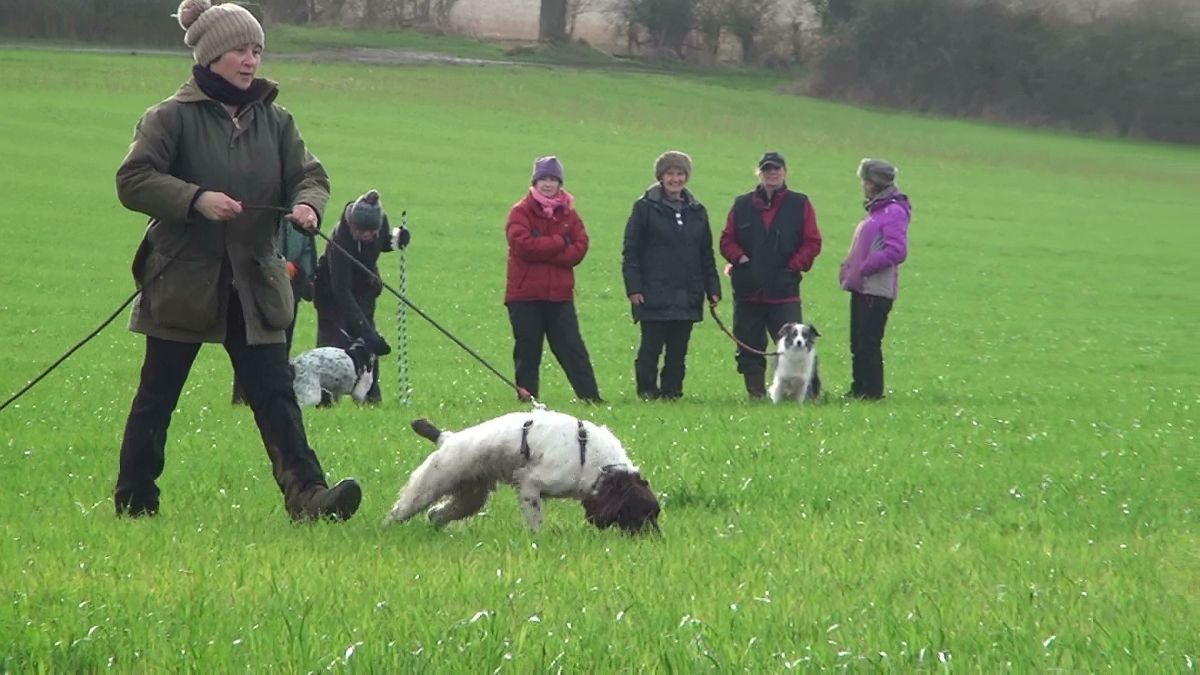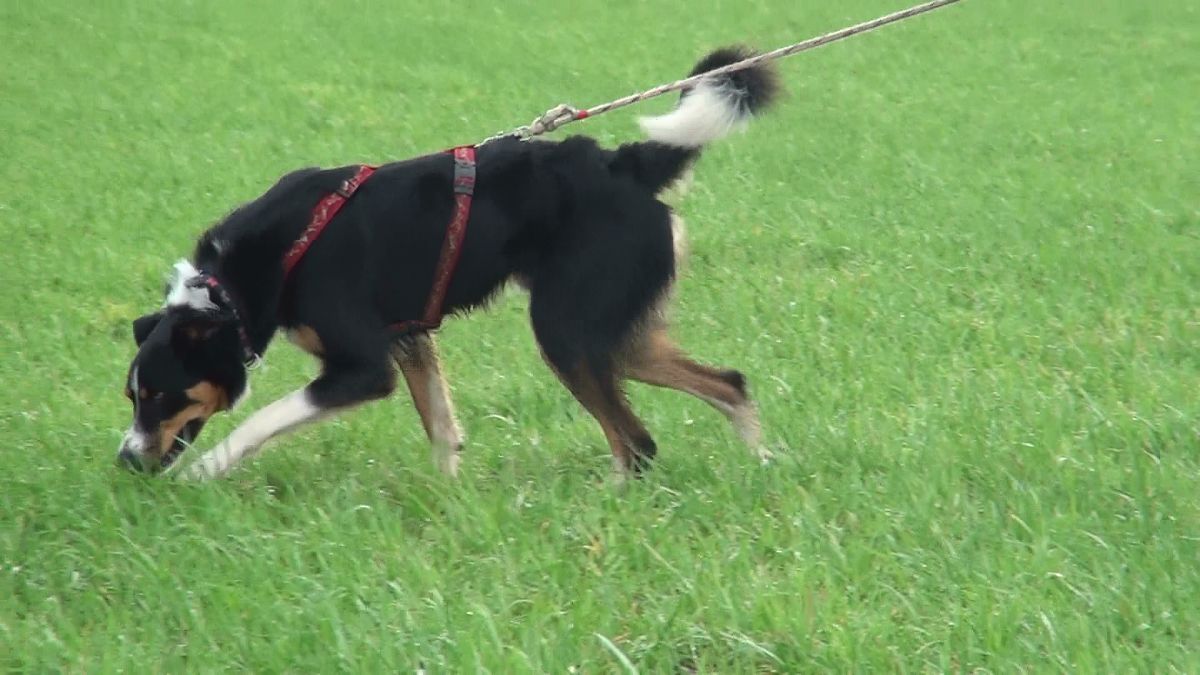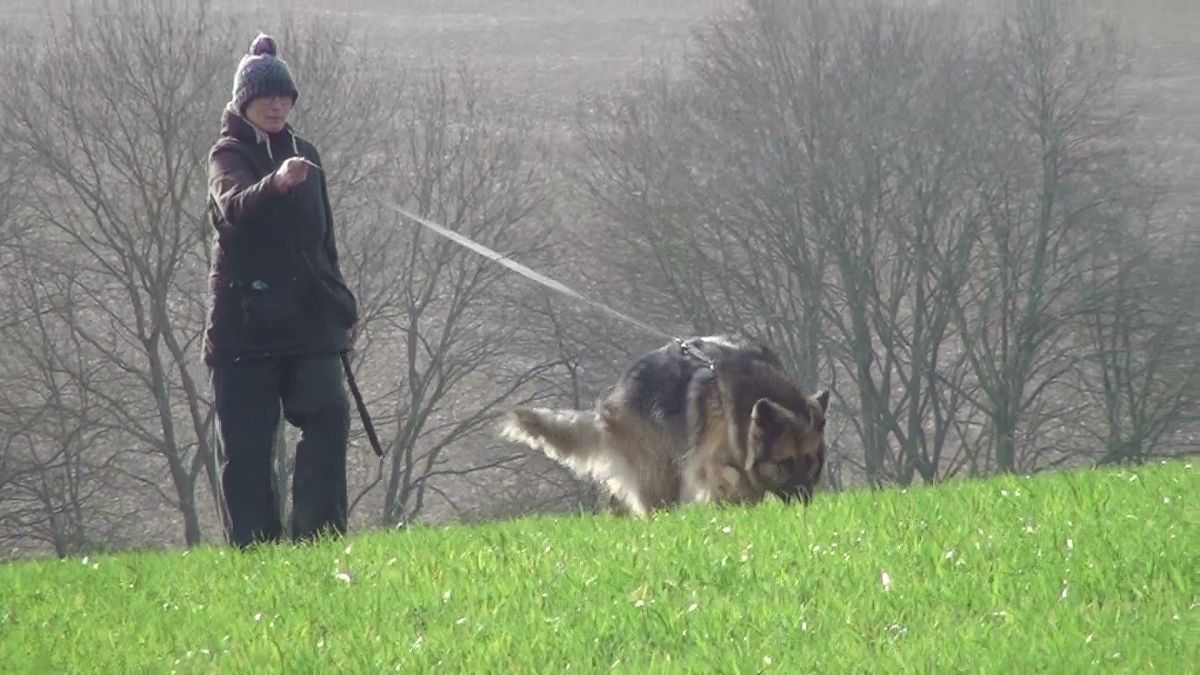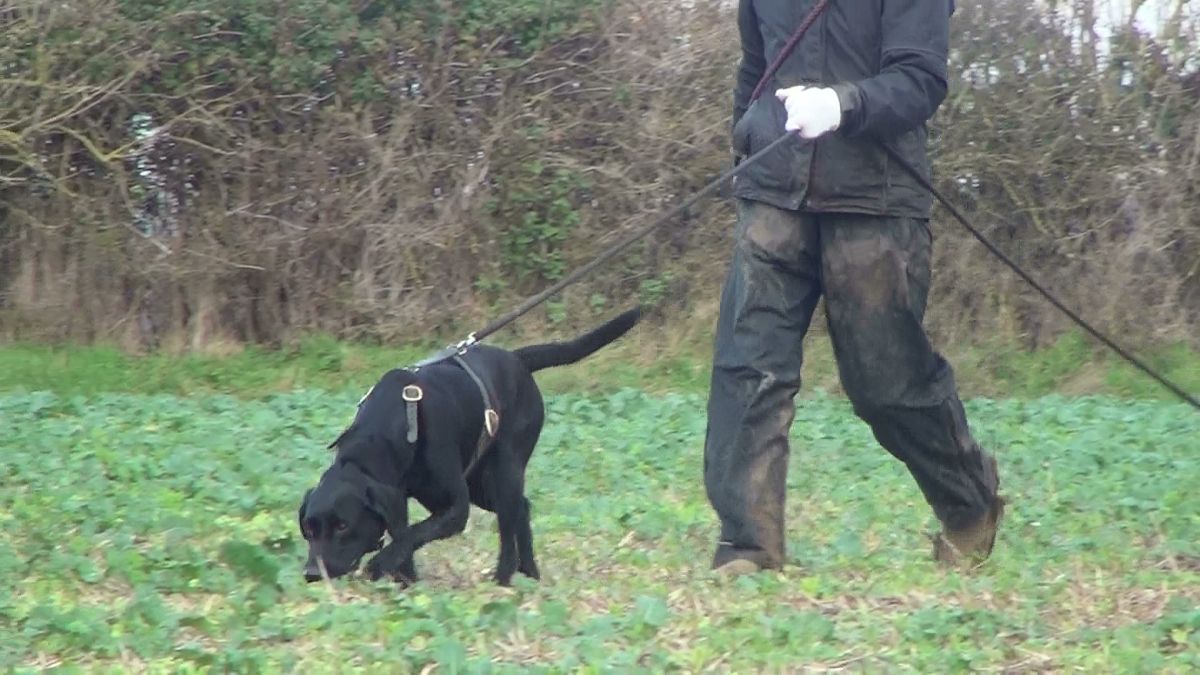Tracking Training
What is tracking?
Training a dog to track involves teaching a dog to use his nose to follow human footprints on different types of terrain, initially this will be on grass. Dogs love using their noses and any breed of dog can learn to track. To start a dog tracking we use the dog’s motivational toy or food to encourage them to track, but eventually we teach them to find any article that has been dropped by a human (track layer) on the track.
You can never force a dog to track so all tracking training has to be motivational and fun, hence all dogs love it!
We organise starter tracking training sessions on our Foundation courses and Tracking Training days for the intermediate and advanced handlers when suitable land becomes available. We also organise Tracklayers courses.
If you are interested in attending tracking training sessions or tracklayers courses, please register your interest here or contact Carla on
UK Tracking Dog Tests
We also organise Tracking Tests for the UK Tracking Dog Association who have designed a series of different levels of Tracking Tests and associated Awards. Any dog of any breed, sex or age, can participate in these tests.
For full details of the UK Tracking Dog Tests please see below.
Tracking allows, and encourages, the dog to express one of its natural behaviours and, for the owner / handler is a truly joyful behaviour to watch and participate in.
Tracking is probably the most mentally stimulating exercise you will ever teach your dog!
We organise Starter Tracking courses for Beginner & Intermediate Dogs.
Dates for 2024 Courses:
Starter Tracking Course: Members login to register
Sunday mornings starting 29 Sept to 17 Nov: 4 sessions - £40
Non Members: for further details & registration please contact Carla on
Beginner dogs and handlers learning about tracking training.
Members of the Banbury Dog Training Club doing UD, WD and TD Tracks in preparation for Competition.
UK Tracking Dog Test Details
Example Track Patterns
Foundation
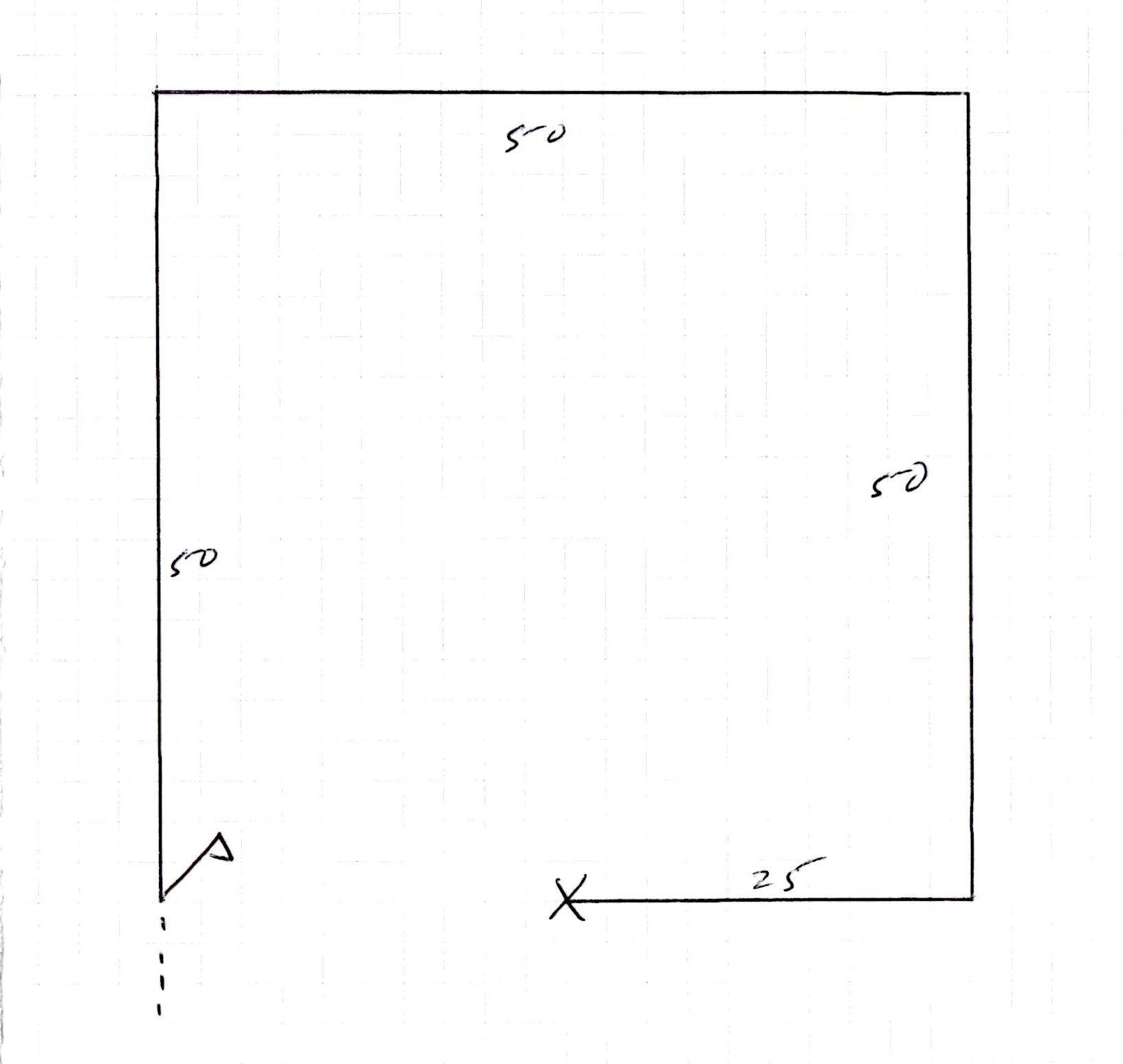
Level 1

Level 2
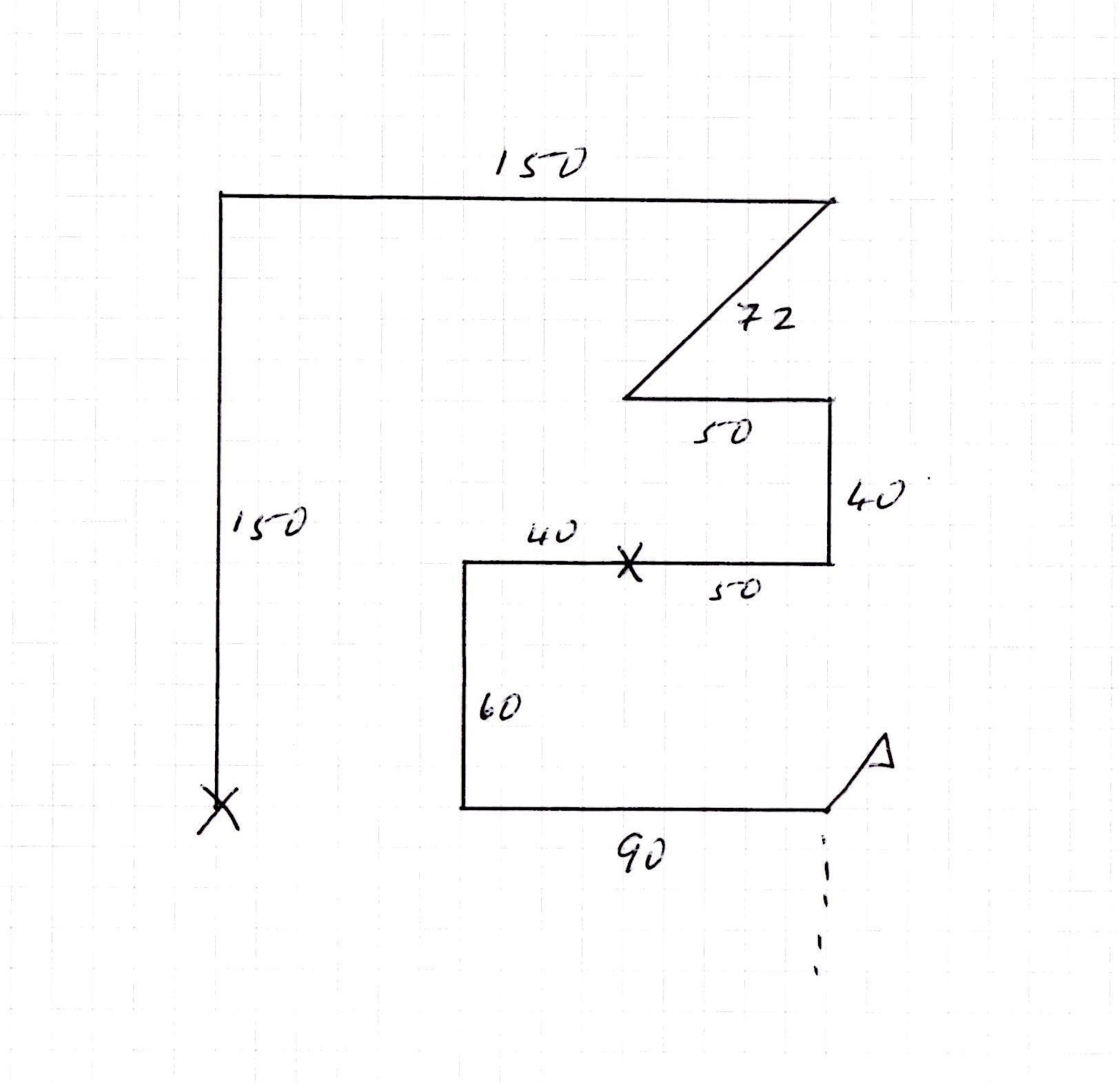
Regulations for Assessment Levels
- Length; Continuous single laid track of 100 – 150m.
- Age; 10 minutes minimum, 20 minutes maximum.
- Terrain; Grassland, heathland or crop. Where possible should not have been used for tracking / walked on in the previous 24 hours.
- Number of Articles; 1. The article should large enough for the dog to play with or the dogs favourite toy can be used. The article to be placed at the end of the track. The dog must indicate the presence of the article.
- Turns / Corners; Can turn right and/or left. Each turn should be 90°.
- Number of legs; 2-3.
- Pole; One to indicate the start of the track. Another pole (or other type of marker) may be used to indicate the direction that the track-layer walked in towards the start pole.
- Time; No time limit. This will be left to the discretion of the Assessor. To qualify, the article must be located by the dog and each leg of the track must be accurately negotiated without undue interference / guidance by the handler.
![]()
- Length; Continuous single laid track of approximately 500m.
- Age; 30 minutes minimum, 1 hour maximum.
- Terrain; Grassland, heathland or crop. Where possible, should not have been used for tracking / walked on in the previous 24 hours.
- Number of Articles; 2. Approximately 10 cm square and of a size & material suitable for the terrain. None should be placed within 30 m of a corner or the start of track. The second article will mark the end of the track. The dog must indicate the presence of the article.
- Turns / Corners; At least 1 both right and left. Each turn should be 90°.
- Number of legs; 5 - 7.
- Pole; One to indicate the start of the track. Another pole (or other type of marker) may be used to indicate the direction that the track-layer walked in towards the start pole.
- Time; No time limit. This will be left to the discretion of the Assessor.
To qualify, at least one of the two articles must be located by the dog and each leg of the track must be accurately negotiated without undue interference / guidance by the handler.
There is no requirement for the dog to adopt any particular tracking style.
![]()
- Length; Continuous single laid track of approximately 700m.
- Age; 2 hours minimum, 2.5 hours maximum.
- Terrain; Grassland, heathland or crop. Should not have been used for tracking / walked on in the previous 24 hours.
- Number of Articles; 2. Approximately 5-7 cm square of a size and material appropriate for the terrain. None should be placed within 30m of a corner or the start of track. The second article will mark the end of the track. The dog must indicate the presence of the article.
- Turns / Corners; At least 1 both right and left. Turns should include 45° and 90° angles.
- Number of legs; 7 - 9.
- Pole; One to indicate the start of the track. Another pole (or other type of marker) may be used to indicate the direction that the track-layer walked in towards the start pole.
- Time; No time limit. This will be left to the discretion of the Assessor.
To qualify, at least one of the two articles must be located by the dog and each leg of the track must be accurately negotiated without undue interference / guidance by the handler.
There is no requirement for the dog to adopt any particular tracking style.
![]()
- Length; Continuous single track of between 800m - 1000m.
- Age; 3 hours minimum, 4 hours maximum.
- Terrain; Grassland, heathland, crop or stubble. Where possible, should not have been used for tracking / walked on in the previous 24 hours.
- Number of Articles; 3. Size and material to be appropriate to the terrain. None should be placed within 30m of a corner or the start of track. The third article will mark the end of the track. The dog must indicate the presence of the article.
- Turns / Corners; At least 1 both right and left. Turns should include 45° and 90° angles.
- Number of legs; 10 - 20.
- Pole; One to indicate the start of the track. Another pole (or other type of marker) may be used to indicate the direction that the track-layer walked in towards the start pole.
- Level 3 has four different challenges/variations of track, these are as follows:-
- 8.1 Standard track - this is a Level 3 track with no cross-tracks or any of the below variations.
- 8.2 Cross Track; One cross track laid by a different tracklayer, 2 hours after the original track was laid. The cross track should be at least 30m away from any article or corner and at least 50m away from the start of the track. The cross track should not be followed by the Tracking Team.
- 8.3 Crossover Track; This is a track that crosses over itself and is laid by the same tracklayer e.g. by laying a letter ‘P’ within the track (see example pattern). No more than one Crossover, to be laid, per track. Although the dog may cast or check the crossover, it should not change direction when it continues along the track.
- 8.4 Dead-leg Track; The tracklayer walks down the leg, backs up 5-10 paces, then makes a 90° turn, either left or right. Only one dead-leg to be laid per track. The dog/handler team will need to work out where to pick up the turn. It is acceptable for the dog to take the correct turn, it does not have to take the dead-leg (see example track).
All track variations are to incorporate paragraphs 1-7 above. To gain a Level 3 the dog must successfully complete one of the tests outlined in 8.1 – 8.4.
To a gain the title of UKTDA Expert Tracking Dog the dog must complete at least 3 of the tracks outlined in 8.1 – 8.4. The Standard track (8.1) can only be used once in this qualification, the other variations (8.2 – 8.4) can be used once or twice.
The handler and assessor will make prior agreement as to which of the variations is to be used in the test and the track-type must be indicated on the Assessment Form. In all circumstances, the handler must know which of these tests he is attempting with his dog.
9. Time; No time limit. This will be left to the discretion of the Assessor. To qualify, two out of three articles must be located by the dog and each leg of the track must be accurately negotiated without undue interference / guidance by the handler.
There is no requirement for the dog to adopt any particular tracking style.

